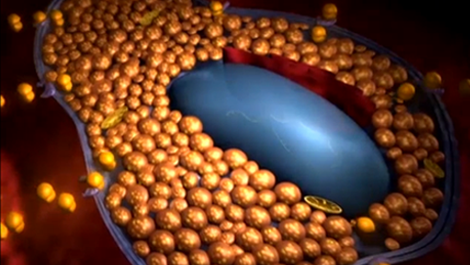NAGLAZYME® (galsulfase) is indicated for patients with mucopolysaccharidosis VI (MPS VI; Maroteaux-Lamy syndrome). NAGLAZYME has been shown to improve walking and stair-climbing capacity.
What is the most important information I should know about NAGLAZYME?
Severe and life-threatening allergic reactions, including anaphylaxis, can occur during NAGLAZYME infusions and up to 24 hours after infusion. These reactions can occur in people receiving NAGLAZYME for the first time or in people who have previously received NAGLAZYME without having an allergic reaction.
Your doctor will tell you about the symptoms of life-threatening hypersensitivity reactions, including anaphylaxis and when to seek immediate medical care. Signs of anaphylaxis can include cough, rash, throat tightness, hives, flushing, changes in skin color, low blood pressure, shortness of breath, chest pain, and gastrointestinal symptoms such as nausea, abdominal pain, retching, and vomiting. If a severe allergic reaction (e.g., anaphylaxis) occurs during infusion, the infusion should be stopped immediately, and you should receive medical attention. Contact your doctor or get medical help right away if you develop any severe symptoms after infusion.
In clinical trials, most patients developed antibodies to NAGLAZYME treatment. There was no clear relationship between antibody formation and the safety or effectiveness of NAGLAZYME.
Serious and severe infusion reactions are associated with NAGLAZYME, including hives, chest pain, rash, abdominal pain, difficulty breathing, swelling, fever, and eye irritation. You should receive medication such as antihistamines before NAGLAZYME infusions to reduce the risk of infusion reactions. If an infusion reaction occurs, the infusion should be slowed or stopped, and you may be given additional medication.
What are the most common side effects of NAGLAZYME?
The most common side effects of NAGLAZYME seen in clinical trials were rash, pain, hives, fever, itching, chills, headache, nausea, vomiting, abdominal pain and difficulty breathing. The most common side effects requiring medical attention are infusion-related effects.
These are not all of the possible side effects with NAGLAZYME. Talk to your doctor if you have any symptoms that bother you or that do not go away.
What else should I know about NAGLAZYME?
NAGLAZYME is a prescription medicine. Before treatment with NAGLAZYME, it is important to discuss your medical history with your doctor. Tell your doctor if you are taking any medication and if you are allergic to any medicines. Your doctor will decide if NAGLAZYME is right for you. If you have questions or would like more information about NAGLAZYME, contact your doctor.
Spinal cord damage may occur due to the natural MPS VI disease process. Signs of spinal cord injury include back pain, loss of bladder and bowel control, numbness, and paralysis. Contact your doctor immediately if you develop any of these symptoms.
Call your doctor for medical advice about side effects. You may report side effects to BioMarin at 1-866-906-6100 and the FDA by visiting www.fda.gov/medwatch or calling 1-800-FDA-1088.
Please see full accompanying Prescribing Information, with important warning for risk of anaphylaxis or visit www.Naglazyme.com.






